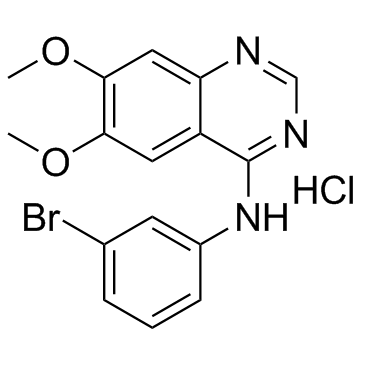PD153035 HCl

PD153035 HCl structure
|
Common Name | PD153035 HCl | ||
|---|---|---|---|---|
| CAS Number | 183322-45-4 | Molecular Weight | 396.666 | |
| Density | N/A | Boiling Point | 472.1ºC at 760 mmHg | |
| Molecular Formula | C16H15BrClN3O2 | Melting Point | 265°C(lit.) | |
| MSDS | Chinese USA | Flash Point | 239.3ºC | |
| Symbol |


GHS05, GHS06 |
Signal Word | Danger | |
|
Mesenchymal transition and dissemination of cancer cells is driven by myeloid-derived suppressor cells infiltrating the primary tumor.
PLoS Biol. 9 , e1001162, (2011) In order to metastasize, cancer cells need to acquire a motile phenotype. Previously, development of this phenotype was thought to rely on the acquisition of selected, random mutations and thus would occur late in cancer progression. However, recent studies s... |
|
|
Reduced annexin A6 expression promotes the degradation of activated epidermal growth factor receptor and sensitizes invasive breast cancer cells to EGFR-targeted tyrosine kinase inhibitors.
Mol. Cancer 12 , 167, (2014) The expression of annexin A6 (AnxA6) in AnxA6-deficient non-invasive tumor cells has been shown to terminate epidermal growth factor receptor (EGFR) activation and downstream signaling. However, as a scaffolding protein, AnxA6 may stabilize activated cell-sur... |
|
|
Claudin-2 expression increases tumorigenicity of colon cancer cells: role of epidermal growth factor receptor activation.
Oncogene 30 , 3234-47, (2011) Claudin-2 is a unique member of the claudin family of transmembrane proteins, as its expression is restricted to the leaky epithelium in vivo and correlates with epithelial leakiness in vitro. However, recent evidence suggests potential functions of claudin-2... |